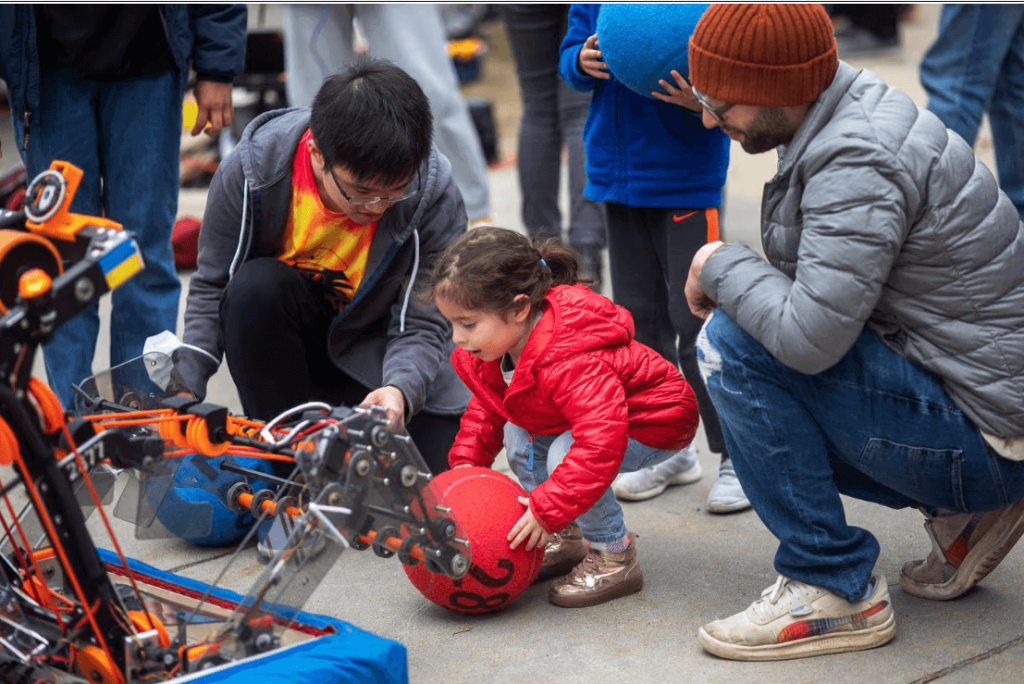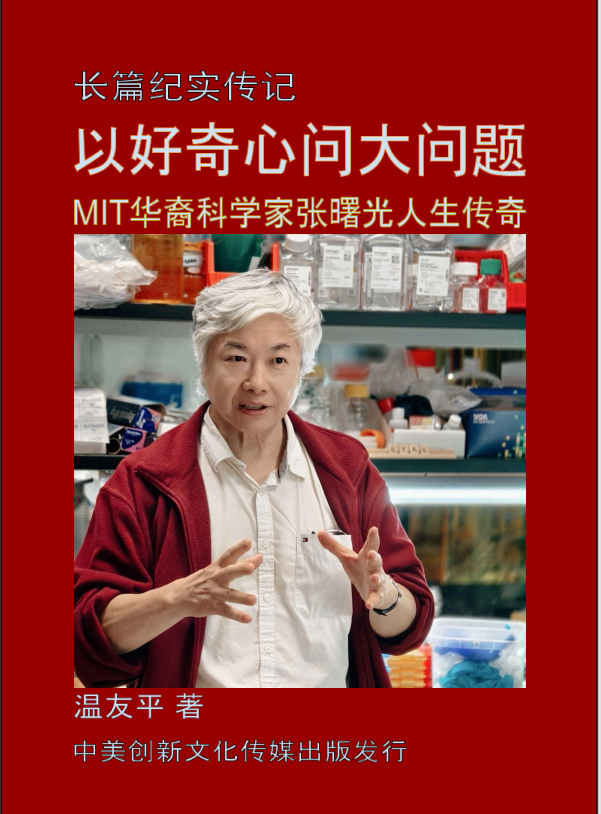【中美创新时报2024 年 9 月 11 日编译讯】(记者温友平编译)如果你让我列出麻省理工学院过去 25 年最具影响力的四件事——真正改变世界的事情——它不会包括任何药物、软件、专利或初创公司。对此,《波士顿环球报》通讯员斯科特·基尔斯纳(Scott Kirsner)作了下述报道。
如果你让我列出麻省理工学院过去 25 年最具影响力的四件事——真正改变世界的事情——它不会包括任何药物、软件、专利或初创公司。
相反,这份名单将包括四个让孩子们对 STEM(科学、技术、工程和数学)感到兴奋并更精通的项目。它们都具有全球影响力。这些项目的发起者和推动者是三位麻省理工学院的教授:米切尔·雷斯尼克 (Mitchel Resnick)、尼尔·格申菲尔德 (Neil Gershenfeld) 和伍迪·弗劳尔斯 (Woodie Flowers),他们于 2019 年去世。
如果你有孩子或孙子,他们所受的教育很可能涉及以下四项中的至少一项:Scratch 编程语言、计算机俱乐部网络、Fab Lab 创客空间网络和 FIRST 机器人竞赛。
超过 1.2 亿人创建了 Scratch 账户,这是一种视觉导向的编程语言,可让孩子们轻松创建自己的动画和互动游戏。超过 320 万名儿童参加了 FIRST 组织的机器人竞赛,参赛团队设计一个需要与他人合作才能战胜对方团队的机器人。本月,FIRST 全球挑战赛将在希腊雅典汇聚来自近 200 个国家的机器人团队。
FIRST 成立于 1989 年,模仿麻省理工学院的一门机器人制造课程,该课程由机械工程学教授弗劳尔斯负责监督。发明家兼企业家迪恩·卡门 (Dean Kamen) 表示,他正在努力扩大他在新罕布什尔州曼彻斯特举办的一项当地工程竞赛。卡门的几位麻省理工学院校友曾参加过这门课程,卡门向弗劳尔斯推荐了他们。卡门想要创建一项运动,而不是科学博览会,而弗劳尔斯是其中的关键贡献者。
与麻省理工学院的课程一样,FIRST 为每个团队提供了一套标准组件和一套他们的机器人必须执行的任务。这些任务通常包括操纵彩色充气球(例如将它们放入箱子中)、在跷跷板上保持机器人平衡或抓住一根杠铃做引体向上。
多年来,弗劳尔斯在许多全国性的 FIRST 比赛中担任主持人,通常穿着一件装饰有学生团队赠送的纽扣的背心。 FIRST 每年仍会颁发以弗劳尔斯命名的奖项,奖励给对参赛儿童影响最大的老师或成人导师。
FIRST 和布兰迪斯大学正在对参赛者进行纵向研究,以了解该项目的长期影响。经过九年的数据收集,我们发现:与高中时选修数学和科学课程但未参加比赛的同学相比,FIRST 校友在大学期间选择 STEM 相关领域专业的可能性高出 17%。而女性 FIRST 校友选择工程或计算机科学专业的可能性是同龄人的三倍。
与此同时,计算机俱乐部起源于麻省理工学院媒体实验室的一个研究小组,该小组专注于学习,由雷斯尼克领导。它的目标是通过制作自己的项目(音乐、网站、游戏、视频)教孩子们如何使用计算机,并在此过程中学习软件和硬件。第一个俱乐部于 1993 年在 Fort Point Channel 的计算机博物馆开业,早年到访的孩子中 90% 以上来自服务不足的社区。
虽然该博物馆已不复存在,但如今在 20 个国家/地区有 151 个俱乐部,还有每年一次的青少年峰会。对在俱乐部待过一段时间的孩子进行的研究发现,93% 的孩子希望高中毕业后继续接受教育,73% 的孩子表示他们在俱乐部的经历影响了这一决定。
在 21 世纪初,雷斯尼克发现印度一些俱乐部的孩子想编写软件,但现有的语言太难学,或者无法轻松完成他们的目标。因此,他和同事(包括 Natalie Rusk)创建了 Scratch 编程语言。该语言的名称指的是 DJ 如何录制和混录他人制作的音乐。使用 Scratch,您可以从空白屏幕开始,也可以使用其他人创建的内容,了解其工作原理,并将其中的元素用于自己的程序中。(您可以看看“Moving About”这样的游戏,玩家通过装载移动卡车获得积分,点击“查看内部”查看其工作原理,并将游戏重新混合为在博物馆中移动绘画而不是从房子中移动家具。)
Scratch 平台已被翻译成 70 多种语言,Scratch 网站上已创建了超过 10 亿个项目。Scratch 和 Clubhouse 都“让孩子们能够根据自己的兴趣,与同龄人合作,以好玩的精神开展项目”,Resnick 说。最近的一项努力是为 Android 智能手机重建 Scratch,以便学生可以为手机构建和共享项目。
麻省理工学院发起的最新计划是 Fab Lab 网络,由一个名为 Fab Foundation 的非营利组织运营。它始于 20 世纪 90 年代末将原型机器带入第一个计算机俱乐部,现在其在 150 个国家/地区的 2,700 个创客空间网络让学生开发自己的项目创意。后来,Gershenfeld 与已故民权活动家 Mel King 合作,于 2003 年在南端建立了第一个永久性 Fab Lab。
与 FIRST 及其对竞争的重视相比,Gershenfeld 表示,Fab Labs 吸引的是“那些对完成分配的任务和竞争取胜不太感兴趣,但对自己想要创造的东西有远见的人”。
虽然 Scratch 可以在许多课堂上使用,但其他三个计划主要在课堂外进行,作为课外活动。但它们相辅相成;学生可能会发现一个 — — 后来又参与另一个。萨默维尔高中 FIRST 机器人团队的教练 Laura Peters 表示:“我的很多学生都是在小学或初中学习 Scratch 后对计算机科学和机器人技术产生了兴趣,因此我认为 Scratch 在这方面绝对可以成为一种了不起的催化剂。”
每一个举措都将麻省理工学院文化中的一些动手解决问题、混乱和协作原型设计元素带入了更广阔的世界。它们都对孩子们学习技术的方式产生了巨大影响。
题图:超过 320 万名儿童参加了 FIRST 组织的机器人竞赛,参赛团队设计一个需要与他人合作才能战胜对方团队的机器人。泰勒·科斯特(Taylor Coester)
附原英文报道:
MIT’s biggest contributions of the past 25 years? They aren’t what you think.
By Scott Kirsner Globe Correspondent,Updated September 10, 2024,
More than 3.2 million kids have participated in a FIRST-organized robotics competition, where teams design a bot that needs to collaborate with others to prevail against an opposing team.Taylor Coester
If you asked me to compile a list of the four most influential things to come out of MIT in the past 25 years — things that have truly changed the world — it wouldn’t include any drugs, software, patents, or startups.
Instead, the list would consist of four programs that get kids excited about, and more proficient in, STEM — science, technology, engineering, and math. All of them have global reach. And they were started or shaped by three MIT professors: Mitchel Resnick, Neil Gershenfeld, and Woodie Flowers, who died in 2019.
If you have kids or grandkids, the odds are good that their education has involved at least one of these four things: the Scratch programming language, the Computer Clubhouse Network, the Fab Lab network of makerspaces, and the FIRST robotics competitions.
More than 120 million people have created accounts to use Scratch, a visually oriented programming language that makes it easy for kids to create their own animations and interactive games. More than 3.2 million kids have participated in a FIRST-organized robotics competition, where teams design a bot that needs to collaborate with others to prevail against an opposing team. This month, the FIRST Global Challenge will bring robotics teams from nearly 200 countries together in Athens, Greece.
FIRST, founded in 1989, was patterned after a robot-building course at MIT that was overseen by Flowers, a mechanical engineering professor. Inventor and entrepreneur Dean Kamen says that he was working to scale up a local engineering competition he’d been running in Manchester, N.H. Kamen had as employees several MIT alumni who’d taken the course, and pointed him to Flowers. Kamen wanted to create a sport — not a science fair — and Flowers was a key contributor.
Like the MIT course, FIRST gives every team a standard set of components and a set of tasks their robot must perform. The tasks typically involve manipulating colorful inflated balls — putting them in bins, for instance — balancing the robot on teeter totter-like elements or grabbing a bar and doing a pull-up.
For many years, Flowers served as an emcee at many of the national FIRST competitions, usually wearing a vest festooned with buttons that had been given to him by the student teams. FIRST still gives out an award named for Flowers each year, to the teacher or adult mentor who has the biggest impact on the kids who participate.
FIRST and Brandeis University are conducting a longitudinal study of participants, to understand the program’s long-term impact. One finding after nine years of gathering data: FIRST alumni are 17 percent more likely to declare a major in a STEM-related field in college than their high school peers who took math and science courses, but didn’t participate in the competition. And female FIRST alumni were three times as likely as their peers to declare a major in engineering or computer science.
The Computer Clubhouse, meanwhile, sprang from a research group at the MIT Media Lab focused on learning, and led by Resnick. Its goal was to teach kids how to use computers by making their own projects — music, websites, games, videos — and learning about software and hardware along the way. The first one opened in 1993 at the Computer Museum in Fort Point Channel, and more than 90 percent of the kids who showed up in the early years were from underserved communities.
While that museum no longer exists, today there are 151 Clubhouses in 20 countries, along with an annual summit that brings teens together. Research done with kids who have spent time at the Clubhouse has found that 93 percent want to continue their education after high school, and 73 percent say that their experiences at the Clubhouse have influenced that decision.
In the early 2000s, Resnick saw that kids at some of the Clubhouses in India wanted to write software, but existing languages were too hard to learn, or couldn’t easily do what they aimed to do. So he and colleagues, including Natalie Rusk, created the Scratch programming language. The name references how DJs scratch records and remix music made by others. With Scratch, you can start with a blank screen or you can take something that another person has created, see how it works, and use elements of it in your own program. (You can look at a game like “Moving About,” where players get points for loading a moving truck, click “see inside” to see how it works, and remix the game to be about moving paintings in a museum instead of furniture from a house.)
The Scratch platform has been translated into more than 70 languages, and more than a billion projects have been created on the Scratch website. Both Scratch and the Clubhouse “enable kids to work on projects based on their passions, in collaboration with peers, in a playful spirit,” Resnick said. A recent endeavor has been rebuilding Scratch for Android smartphones, so students can build and share projects for mobile phones.
The newest of the MIT-spawned initiatives is the Fab Lab Network, run by a nonprofit called the Fab Foundation. It began by bringing prototyping machinery into that first Computer Clubhouse in the late 1990s, and now its network of 2,700 makerspaces in 150 countries let students develop their own project ideas. Later, Gershenfeld worked with Mel King, the late civil rights activist, to set up the first permanent Fab Lab in the South End in 2003.
Compared with FIRST, and its emphasis on competition, Gershenfeld said the Fab Labs attract “people who are less interested in doing the assigned task and competing to win it, but have visions of what they want to create.”
While Scratch may be used in many classrooms, the other three initiatives largely take place outside of the classroom, as extracurricular activities. But they reinforce each other; a student may discover one — and later participate in another. Laura Peters, who coaches the FIRST robotics team at Somerville High School, says that “a lot of my students got interested in computer science and robotics by learning Scratch as elementary or middle school students, so I definitely think that Scratch can be an amazing catalyst in that way.”
Each of the initiatives brings some of the hands-on problem solving, messiness, and collaborative prototyping elements of MIT’s culture into the wider world. And they’ve all had a big impact on the way kids learn about technology.

